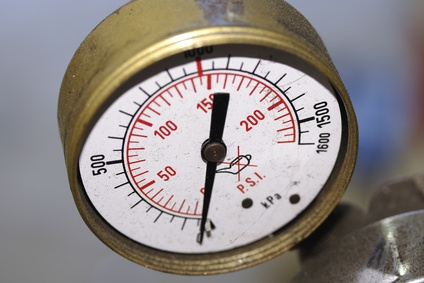
Instead of settling for mediocre performance from your engine, adjust your vehicle's fuel injection system. The injection system distributes fuel to the engine and maintains proper fuel pressure levels. To get the most from your engine you should check the fuel pump, filter, fuel injectors, and fuel pressure regulator of the injection system during regular maintenance. Adjust the fuel pressure regulator to reset the fuel pressure when you notice that your engine has frequent hard starts, stalls, or does not produce enough power. It only takes a few minutes to get the fuel pressure to proper operating levels. Use a fuel pressure gauge to monitor the pressure level while adjusting.
Loosen the adjusting screw lock nut with the wrench while the engine is off. Turn the screw clockwise until it stops. The adjusting screw lock nut will be located on the fuel pressure regulator towards the end of the fuel rail.
Remove the vacuum hose of the fuel pressure regulator before attempting to set the fuel pressure.
Install the fuel pressure gauge into the testing port located on the fuel rail after removing the protective cap. Support the gauge so that observation can be done at a comfortable angle.
Start the engine and let engine idle for at least one minute to build a stable fuel pressure. The reading indicates the maximum pressure the fuel pump can produce in the 2-12 psi range.
Reconnect the vacuum hose of the regulator to the correct position.
Turn the adjustment screw counter clockwise, all the way out. Hit the throttle a few times until the pressure gauge reaches a "0" reading.
Turn the adjustment screw again, this time clockwise until the gauge reads 6 psi operating fuel pressure with the engine in idle. Lock the screw in place by tightening the nut.